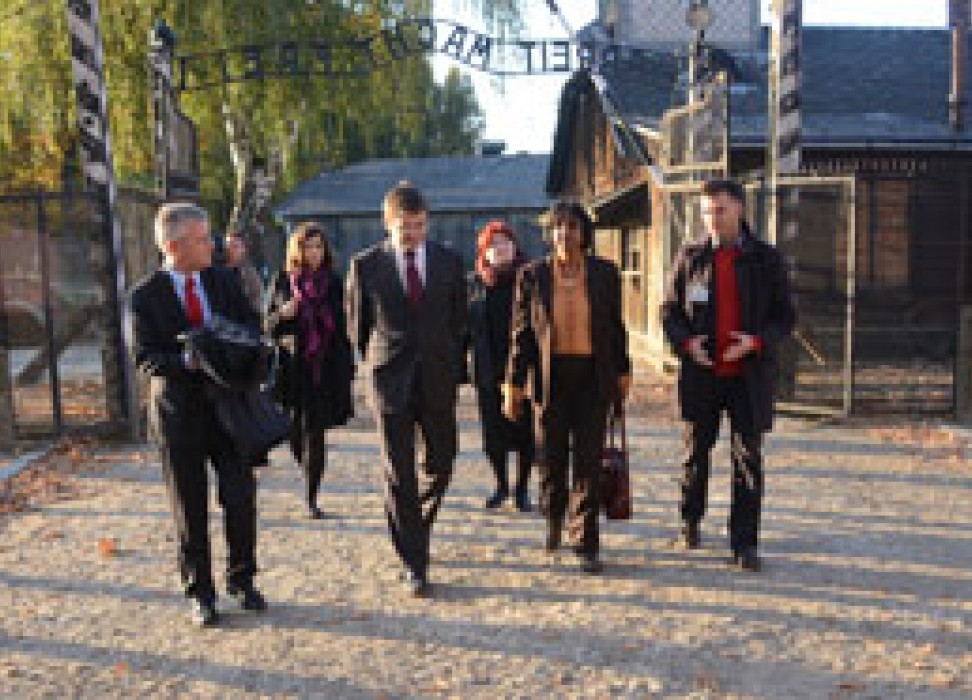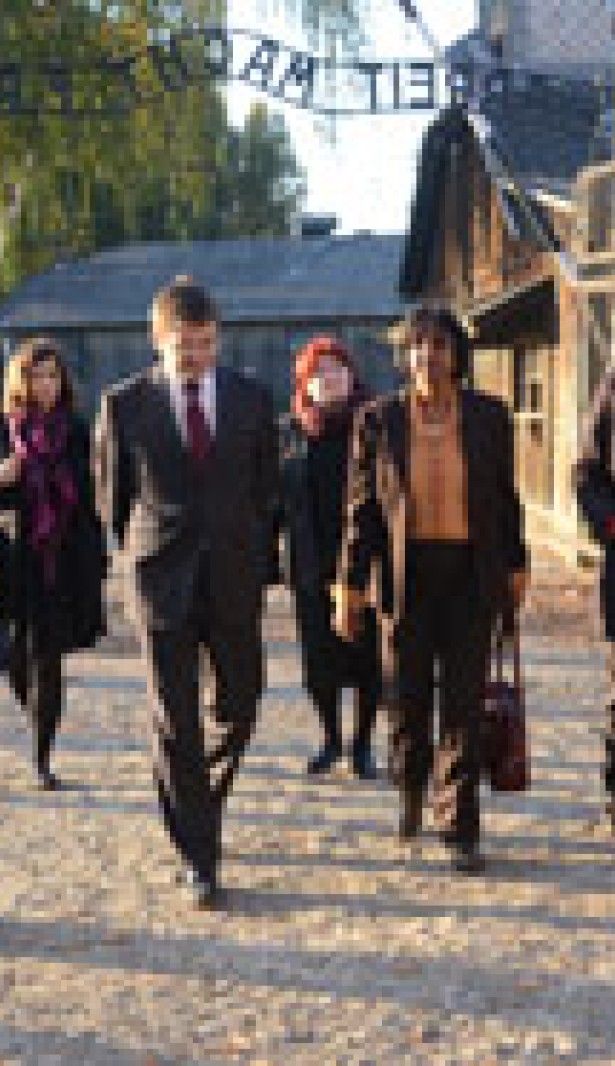In memory of the victims of the Holocaust: A star shining in darkness
28 January 2014

During the 1930s in Prague, a young imaginative Jewish boy, Petr Ginz, showed a great talent in writing and drawing. His father sent him to a school where he could explore his creativity and thrive. On March 1939, Nazi troops entered Prague and quickly turned everyday life into a nightmare for Petr and his family. But, he continued to immerse himself creatively. In 1944 at the age of sixteen, he was transported to Auschwitz and never returned home.
“The Holocaust remains one of the paramount examples of humans’ ability to sink to unimaginable depths of cruel depravity, but in the middle of death and destruction, one can also find resistance to despair,” said UN Human Rights Chief Navi Pillay during a UN Human Rights Office event on 28 January marking the International Day of Commemoration in memory of the victims of the Holocaust, which was held at the Palais des Nations in Geneva, Switzerland.
In her opening statement, Pillay shared Petr’s story and said that even though his world was filled with fear and tragedy, he wrote four novels that took his readers and himself on enchanting journeys.
“And while this word [journey], in connection with the Holocaust, conjures up grim images of train after train heading to the concentration camps, Petr shows us that in the middle of despair and destruction, the human mind is capable of imagining other journeys, full of beauty and inspiration,” Pillay said.
While Petr was surrounded by death, starvation, and disease, he continued to craft imaginative tales between the age of eight and fourteen. He created paintings to accompany his adventure novels. When he was 14, Petr also wrote a diary that his sister found years later and published. “His love for life, his easy laughter and resourceful stories provided solace for many of his fellow inmates,” Pillay said. “His stories eased their burden and provided a ray of humanity. On many grim days it was Petr, a small Jewish boy from Prague, who provided a seed of hope to the desperate people incarcerated alongside him.”
Pillay stressed the importance of never forgetting or downplaying the Holocaust. “The Holocaust serves as a reminder of the perils of discrimination and intolerance,” she said. “It highlights the importance of intervening early to prevent such a tragedy from occurring again.”
The event was a commemoration of the millions of victims—men, women, children, Jews, Roma, Sinti, homosexuals, political opponents, the disabled, among others—who lost their lives in the Holocaust. The panel discussion brought together Member States and experts for an interactive dialogue on discrimination and prevention.
During the discussion, Dan Michman, Head of the International Institute for Holocaust Research at “Yad Vashem”, Professor of Modern Jewish History and Chair of the Institute of Holocaust Research at Bar-Ilan University, focused on his expertise as an historian and said what people can learn from history is human behaviour. “The boundaries of evil were set much further than we knew before,” he said.
Karolina Mirga, Secretary General of Ternype International Roma Youth Network and Coordinator at the Roma Genocide Project, said that it is vital to engage youth in Holocaust education and ensure that the Genocide of European Roma, “the forgotten Holocaust”, has a proper place in history.
Mario Silva, Chair of the International Holocaust Remembrance Alliance (IHRA), also highlighted the importance of promoting Holocaust education in order to learn from the past. “We need to understand that this will never happen again,” Silva said.
“Like millions of other victims, Petr has no grave,” Pillay said. “But he will never be forgotten. It was this little boy, who taught us—these are his own words—that “the seed of a creative idea does not die in the mud and scum. Even there it will germinate and spread its blossom like a star shining in darkness.”
28 January 2014

